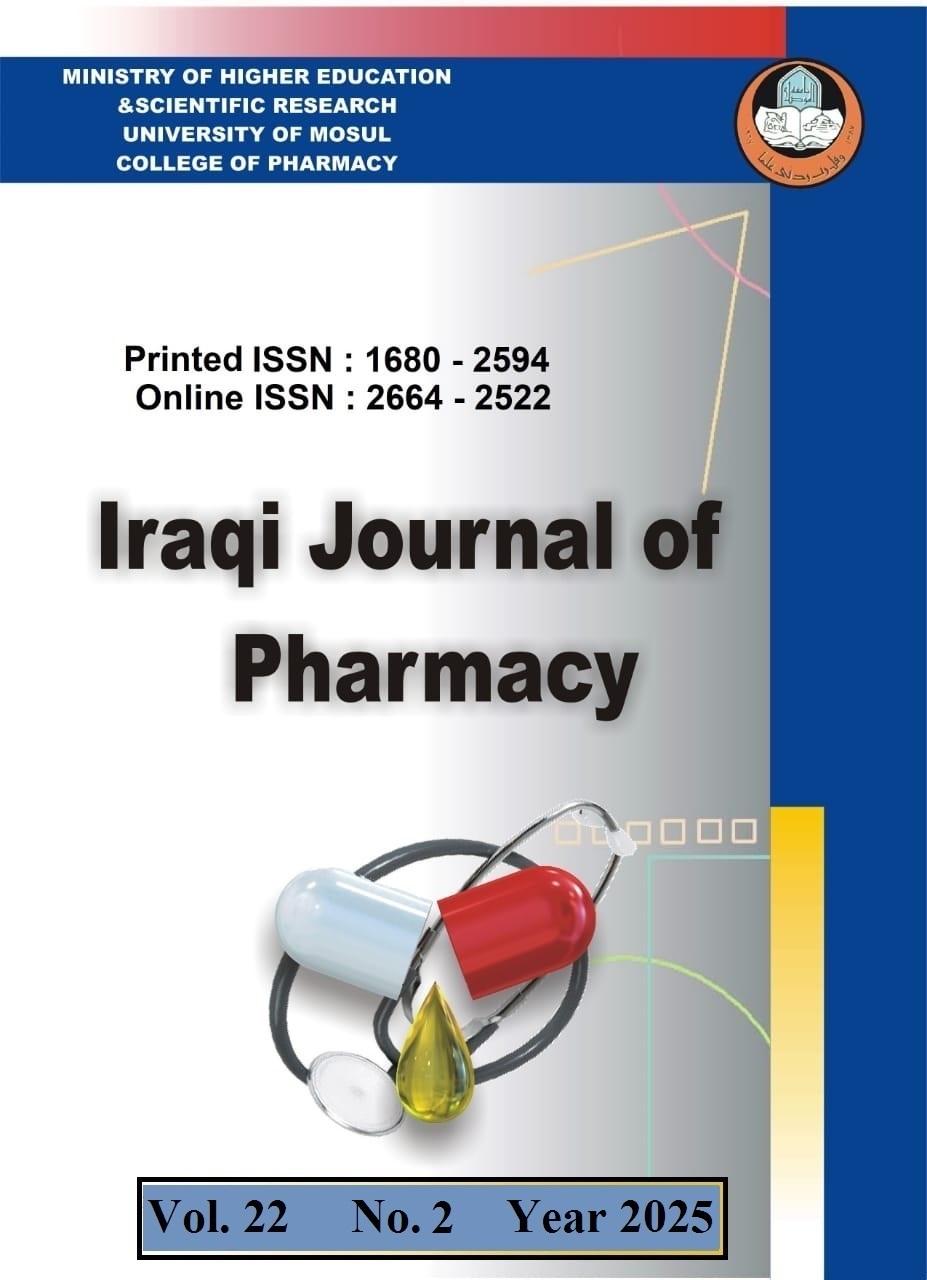Awareness, Knowledge and Attitude of Waterpipe Smoking Among University Students in Syria: A Cross Sectional Study
Abstract
Background: Waterpipe smoking, also known as hookah or shisha smoking, has gained popularity in recent years, particularly among young adults and adolescents. Methods: A cross-sectional survey was conducted at four universities in Syria, using an interviewer-administered questionnaire aimed to determine the prevalence of waterpipe smoking among university students in Syria, explore their attitudes and awareness of the health risks, and assess their intentions to quit smoking. 321 students participated in the study with a gender ratio of 44.2% male and 55.8% female. Results: The most common positive perceptions of Waterpipe were related to entertainment (20.6%) and stress reduction (9.3%). The negative perceptions of the waterpipe according to the students, as 29.3% stated that everything in the waterpipe is harmful. Almost every student has stated in a way or another the dangerous and negative effects of smoking waterpipe (99%). A significant percentage of students believe that the most common reasons for using a waterpipe are self-expression, boredom, and the availability of time. The majority of waterpipe smoking students, 83 expressed no plan of giving up smoking (52.8%). Approximately half of the students abstain from smoking waterpipe entirely, attributed to their heightened awareness and understanding of the health hazards associated with smoking, both for themselves and those around them. Only 6.9% of students have named tuberculosis a disease that can be transferred by waterpipe and 36.4% have named influenza virus as waterpipe transferable. Furthermore, 28.7% of participants asserted that the coronavirus is transmitted through waterpipe. Conclusion: Waterpipe smoking poses a significant health challenge in Syria, therefore, this study contributes with data that support eradication of this health issue.
References
- Alfoteih, Y., Azizi, S., Khajehkarimoddini, L., Jaber, Z., and Abdullah, S. Shisha-The hazardous pastime: Microbial investigation of shisha apparatus in public cafes in the UAE. Malaysian Journal of Public Health Medicine 2018; 18 (2): 101-108.
- Almogbel, Y. S., Aladhadh, T., Alammar, A., Aloraini, A., Alghofaili, S., Almutairi, A., and AlAmri, A. Predictors of waterpipe smoking among university students in the Qassim region, Saudi Arabia. Tobacco Induced Diseases 2021; 19: 67.
- Alolabi, H., Alchallah, M. O., Mohsen, F., Shibani, M., Ismail, H., Alzabibi, M. A., and Sawaf, B. Prevalence and behavior regarding cigarette and water pipe smoking among Syrian undergraduates. Heliyon 2020; 6(11): e05423.
- Azagba, S., Latham, K., and Shan, L. Waterpipe tobacco smoking trends among middle and high school students in the United States from 2011 to 2017. Drug and alcohol dependence 2019: 200, 1925.
- Badran, M., and Laher, I. Waterpipe (shisha, hookah) smoking, oxidative stress and hidden disease potential. Redox Biology 2020; 34: 101455.
- Bener, A., Stewart, T., and Al-Ketbi, L. M. Cigarette smoking habits among high school boys in the United Arab Emirates. International Quarterly of Community Health Education 1998; 18(2): 209-222.
- Darawshy, F., Abu Rmeileh, A., Kuint, R., and Berkman, N. Waterpipe smoking: a review of pulmonary and health effects. European Respiratory Review 2021; 30(160): 200374.
- Haddad, L. G., and Malak, M. Z. Smoking habits and attitudes towards smoking among university students in Jordan. International Journal of Nursing Studies 2002; 39(8): 793-802.
- Hasim, T. J. Smoking habits of students in College of Applied Medical Science, Saudi Arabia. Saudi Medical Journal 2000; 21(1): 76-80.
- Malayil, L., Chattopadhyay, S., Mongodin, E. F., and Sapkota, A. R. Bacterial communities of hookah tobacco products are diverse and differ across brands and flavors. Applied Microbiology and Biotechnology 2022; 106(17): 57855795.
- Marshall, A., Barua, D., Mitchell, A.S., Keding, A., Huque, R., Khan, A., Zahid, R., Dogar, O., and Siddiqi, K. Smoking prevalence among tuberculosis patients: A crosssectional study in Bangladesh and Pakistan. Tobacco Induced Diseases, 2020; 18:70.
- Maziak, W., and Sharma, E. Building the evidence base for waterpipe regulation and policy. Tobacco Control 2020; 29(Suppl 2): s59s61.
- Maziak, W., Eissenberg, T., Rastam, S., Hammal, F., Asfar, T., Bachir, M. E., Fouad, M. F., and Ward, K. D. (2004). Beliefs and attitudes related to narghile (waterpipe) smoking among university students in Syria. Annals of Epidemiology 2004; 14(9): 646654.
- Melani, A. S., Verponziani, W., Boccoli, E., Trianni, G. L., Federici, A., Amerini, R., and Sestini, P. Tobacco smoking habits, attitudes and beliefs among nurse and medical students in Tuscany. European Journal of Epidemiology 2000; 16: 607-611.
- Metinta, S., Sariboyaci, M. A., Nuholu, S., Metinta, M., Kalyoncu, C., Etiz, S., and Akta, C. Smoking patterns of university students in Eskiehir, Turkey. Public Health 1998; 112(4): 261-264.
- Nasser, A. M. A., and Zhang, X. Knowledge and factors related to smoking among university students at Hodeidah University, Yemen. Tobacco Induced Diseases 2019; 17, 42.
- Niazi, A. U., Shayan, N. A., Ozgur, S., Joya, S. A., and Ozcebe, H. (2020). Waterpipe Smoking among Herat University Students: Prevalence, Attitudes, and Associated Factors. Addiction and Health 2020; 12(4): 235243.
- Patel, M. P., Khangoora, V. S., and Marik, P. E. A Review of the Pulmonary and Health Impacts of Hookah Use. Annals of the American Thoracic Society 2019; 16(10): 12151219.
- Pratiti, R., and Mukherjee, D. Epidemiology and Adverse Consequences of Hookah/Waterpipe Use: A Systematic Review. Cardiovascular and Hematological Agents in Medicinal Chemistry 2019; 17(2), 8293.
- Robinson, J. N., Wang, B., Jackson, K. J., Donaldson, E. A., and Ryant, C. A. Characteristics of hookah tobacco smoking sessions and correlates of use frequency among US adults: Findings from Wave 1 of the Population Assessment of Tobacco and Health (PATH) study. Nicotine and Tobacco Research 2018; 20(6): 731-740.
- Rogers E. S. Financial Distress and Smoking-induced Deprivation in Smokers with Depression. American Journal of Health Behavior 2019; 43(1): 219227.
- Rogers, I., Memon, A., and Paudyal, P. Association between Smokeless Tobacco Use and Waterpipe Smoking and the Risk of Lung Cancer: A Systematic Review and Meta-Analysis of Current Epidemiological Evidence. Asian Pacific Journal of Cancer Prevention 2022; 23(5): 14511463.
- Salles, T. V., Andrade, A. G. D., and Oliveira, L. G. D. Young people continue to use hookah despite knowledge of possible health risks. Estudos de Psicologi 2023; 40: e230009.
- World Health Organization. Fact sheet: waterpipe tobacco smoking and health (No. WHO/NMH/PND/15.4). World Health Organization, 2015. https://www.who.int/publications/i/item/fact-sheet-waterpipe-tobacco-smoking-and-health








